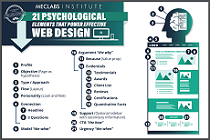
|
SUMMARY:
Beautiful. That is not a word I usually use to describe MarketingSherpa case studies. But I challenge you to read this story and disagree with me. Even if you don’t work in the public sector, the customer-first objective this team used when selecting a CTA should get you to question (and improve) your own campaigns. Read on to see the power of marketing to connect people with the value and help they need in a noisy marketplace. |
Action Box: Let AI Agents Market For You
Join us on Wednesday, April 23rd at 2:30 pm EDT for Let AI Agents Market For You, taught by Flint McGlaughlin (from MeclabsAI, MarketingSherpa’s parent company).
I really like this case study because it’s a good reminder of what the core of marketing really is – connecting the ideal customer with value.
That can get lost in technology and databases and the need to hit revenue or lead targets.
While the subject of this case study is not a for-profit company, the same lessons in hear hold true even if you don’t work in the public sector.
In this case study, learn how The City of Indianapolis transformed public health marketing by shifting to a customer-first objective, resulting in a 295% increase in crisis response calls.
In July 2023, The City of Indianapolis Office of Public Health & Safety teamed up with Stepping Stones Therapy Center to launch a pilot project called Clinician-Led Community Response (CLCR). CLCR responds to 911 calls with licensed behavioral health professionals instead of law enforcement, when appropriate.
The pilot focused only on downtown Indianapolis, and the team relied on in-house grassroots marketing of flyers and brochures passed out downtown.
Creative Sample #1: CLCR flyer

The grassroots, in-house team struggled to get the word out. The campaign faced limited visibility and failed to capture the urgency required in crisis response scenarios.
For your brand, unoptimized marketing might mean lower sales. In this case, people in crisis continued defaulting to traditional law enforcement responses – an outcome that wasn’t ideal for the citizen or for the police.
The CLCR team brought in a professional agency to launch a true marketing campaign with:
The new team reframed CLCR as a non-police crisis response option for people experiencing mental health challenges. They anchored the messaging around three core themes:
They ran billboards, digital ads, and transit ads targeted to downtown Indianapolis, supported by radio ads and earned media. “The IndyGo had a central bus hub in the heart of downtown Indianapolis, a key strategic location as buses came and left the hub, as well as a high area known for those individuals with mental health crises to congregate,” said LaMar Holliday, Chief Executive Officer, The Holliday Collaborative Agency.
Creative Sample #2: Transit ad

The ads’ language focused on empathy and reassurance with a calming visual identity focused on human-centered photography.
But I think the real beauty in this case study – and what every marketer can learn from – is the customer-first marketing approach the team took with the call to action. These ads had a customer-first objective, not a company-first objective. They removed the ultimate conversion they wanted from the customer (‘Call 911’) and inserted a trust-building step in the process that would help the customer come to the conclusion that they should ultimately take the desired, final conversion action.
They chose this strategy because many residents have deep concerns about how law enforcement responds to mental health crises. In fact, CLCR was launched after Herman Whitfield III was tased by police during a mental health episode and died. Placing ‘911’ front and center on a billboard might have turned people away out of fear or mistrust.
Instead, the call to action was to visit a webpage that explained the program (since it was a city program, the webpage had to be on the city’s website). They only mentioned 911 on the webpage once they had explained the program and built trust.
The rearrangement of CTA from ‘Call 911’ to a webpage visit is an example of a nuanced understanding of customer anxiety.
Creative Sample #3: Billboard

“The marketing campaign helped transform CLCR from a little-known pilot into a trusted lifeline. The visibility from the billboards and targeted outreach made people aware that there’s a compassionate, non-police option for mental health crises – and that awareness has directly driven our growth,” said Yvette Wilson, CEO, Stepping Stones Therapy Center (the organization running the Clinician-Led Community Response team).
From its initial program launch in July 2023 to November 2023, CLCR received an average of 20.4 calls per month.
During the campaign, the average monthly call volume more than doubled to nearly 41.6 calls per month (December 2023 – February 2024). After the campaign, the demand continued to grow with an average of 80.5 calls per month (March 2024 – June 2024), a fourfold increase compared to the program’s early months.
In December 2024, CLCR and the city announced expanding the program across the city due to demand for the service.
“This was more than a brand – it became a symbol of safety and trust for people who have historically feared calling for help,” Holliday said.
This article was distributed through the MarketingSherpa email newsletter.
Customer-First Objective Builder (select CFO Builder in the right-hand column) from MeclabsAI, MarketingSherpa’s parent company
Customer-First Marketing: How to shift to a customer-first strategy (3 case studies)
Marketing Chart: Does customer-centric marketing fall short of satisfying the customer?
Help, Don’t Hype: A guide to customer-first marketing
Customer-First Objectives: Discover a 3-part formula for focusing your webpage message
Customer-First Objectives Application Session: See real webpages optimized for marketing conversion
Get Better Business Results With a Skillfully Applied Customer-first Marketing Strategy

The customer-first approach of MarketingSherpa’s agency services can help you build the most effective strategy to serve customers and improve results, and then implement it across every customer touchpoint.
Get More Info >MECLABS AI

Get headlines, value prop, competitive analysis, and more.
Use the AI for FREE (for now) >Marketer Vs Machine

Marketer Vs Machine: We need to train the marketer to train the machine.
Watch Now >Live, Interactive Event

Join Flint McGlaughlin for Design Your Offer on May 22nd at 1 pm ET. You’ll learn proven strategies that drive real business results.
Get Your Scholarship >Free Marketing Course

Become a Marketer-Philosopher: Create and optimize high-converting webpages (with this free online marketing course)
See Course >Project and Ideas Pitch Template

A free template to help you win approval for your proposed projects and campaigns
Get the Template >Six Quick CTA checklists

These CTA checklists are specifically designed for your team — something practical to hold up against your CTAs to help the time-pressed marketer quickly consider the customer psychology of your “asks” and how you can improve them.
Get the Checklists >Infographic: How to Create a Model of Your Customer’s Mind

You need a repeatable methodology focused on building your organization’s customer wisdom throughout your campaigns and websites. This infographic can get you started.
Get the Infographic >Infographic: 21 Psychological Elements that Power Effective Web Design

To build an effective page from scratch, you need to begin with the psychology of your customer. This infographic can get you started.
Get the Infographic >Receive the latest case studies and data on email, lead gen, and social media along with MarketingSherpa updates and promotions.